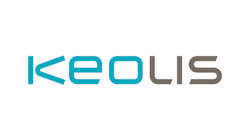Inside the convention center at the American Public Transportation Association's EXPO in Atlanta, Georgia, visitors had the opportunity to take a test ride in a Navya autonomous shuttle operated by Keolis.
The technology of the shuttle is based on GPS and LIDAR, there are four sensors in the front and four in the back. The LIDAR uses light waves to create a view of the area around it. Cremiers explained the shuttles always operate on a set route.
“In Switzerland we are on open roads where there are also pedestrians and cars,” Cremiers said. “We are the only one to be in construction, manufacturing and deployment. Most of our pilots last a year. We want to know how they run in different conditions. If you only do a pilot for a few days, you don’t get a good idea.”
When the shuttle piloted in France during for a month they had around 500 thousand people. Cremiers said that one of the reasons that they run such long pilots is so that people are able to adapt to them.
“People play with the shuttle. People eventually get a better understand of the shuttle,” Cremiers explained that people would play ‘chicken’ testing the shuttles stopping ability. “In Paris they played with it at first, but now since it took them from their train station to their office, they like it.
One of the roles of the pilot is to see how people react to the shuttle in the dense area. At the beginning, the speed of the shuttle was very slow, but after three months, it was bumped up to about 10 km/hr.
The battery range is about 11 hours and takes about 7 hours to charge, or a quick charge of four fours. While the top speed is about 20 mph, it typically runs at about 10 mph.




